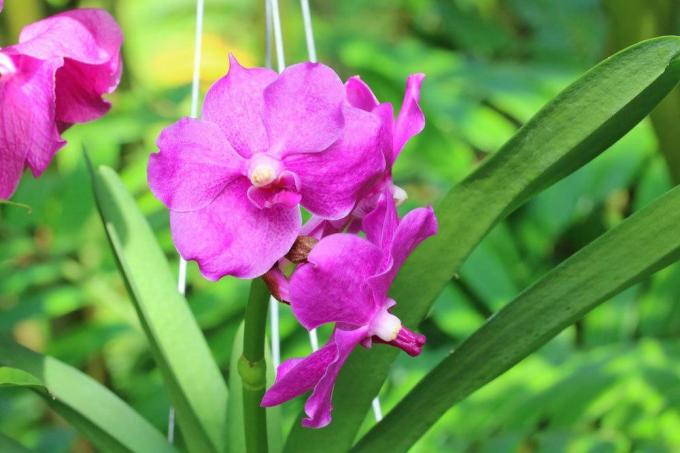
table of contents
- Disease symptoms
- causes
- Clinical pictures
- Falling leaves
- Lack of light
- Flower spots
- Flower waste
- Leaf spots
- Putrefaction
- Accordion growth
Orchids require good care from their owners, but even with the best care, illnesses can occur. The plant expert explains how you can recognize them quickly, which special features indicate them and how you can get them under control again.
Every plant can get sick, including the orchid. Some people mean it too well by care or do not pay enough attention to it, in other cases viruses, bacteria or fungal infections lead to illnesses. Those who do not react quickly or treat them incorrectly run the risk of the noble flower dying off. Here you can find out how diseases can manifest themselves and receive helpful tips for treatment.
Disease symptoms
Only those who interpret symptoms of illness as these can act accordingly in order to save the plant from what is usually certain death. If one or more of the characteristics, as described below, stand out, this is where you should deal in detail with orchid diseases and promising treatments should.
These are clear signs:
- falling leaves (occasionally one or two are normal)
- Flowers fall off without wilting
- Flowers do not develop
- Rot
- sudden spots on the leaves of plants
- Spots on the petals
- Accordion growth
- Mold in the floor area
- no or only a few flowers
- Stems with decreasing stability - flowers droop
First measure
As soon as you notice any of the symptoms mentioned above, you should immediately move your orchid away from other plants. If the disease is a disease that can spread to neighboring plants in the immediate vicinity, you can use isolation to prevent possible further damage. So if you are not entirely sure what condition your orchid is suffering from, this first step is always recommended as the first step.
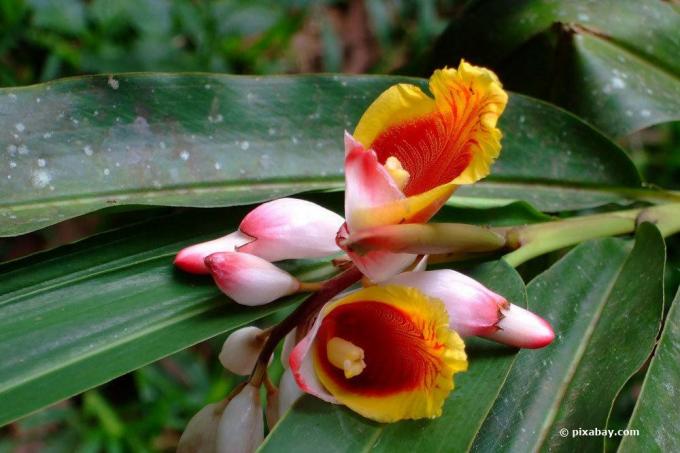
causes
The most common diseases are those that are the result of poor care. Above all, excessive watering or waterlogging usually causes orchids to get sick quickly. Fungal infections, bacterial infestation or a virus can also be the cause of an emerging disease. Pests often trigger similar symptoms. Full details can be found in the separate guide "Pests on orchids from A-Z with pictures - help and tips".
Clinical pictures
Falling leaves
As with any other plant, it is also normal with the orchid that one or two leaves fall off from time to time or that one or the other leaf turns yellow from time to time. However, if over a longer period of time or in quick succession, an unnatural number of leaves suddenly fall off or If a leaf discoloration extends continuously for a long time, there could be another reason for it to be investigated is.
Fungal infection:
One reason for excessive leaf drop may be a fungal infection. This can for example have been transferred via a cutting tool or neighboring plants. Sometimes orchids are already bought with fungal attack and, especially if the substrate is of poor quality, there is no guarantee that it is free from fungi.

Mainly because the orchid needs a warm and humid microclimate, this offers optimal conditions for a fungal infection at open injuries / interfaces. In this case, the conductor tracks are clogged, so that the transport of nutrients, water and more Supply elements gradually decreases, the leaves die off / fall off and ultimately that too Orchid family.
Treatment:
As part of the first measure, the plant must be removed from other plants immediately and kept at a safe distance from them until they have recovered completely. Since fungi can cause extreme damage and, above all, quickly put the health of your orchid in a life-threatening position, it is advisable to treat it with a fungicide.
This is available in every well-stocked garden and flower shop and is specially designed for the treatment of fungal infections. You are well served if you use a broad spectrum fungicide because it is almost impossible to find out what type of fungus it is. Saprol from Celaflor, for example, is such a broad spectrum fungicide that can be bought for roses and vegetables and is also effective for ornamental plants such as orchids.
Lack of light
Natural leaf fall or yellowing is not uncommon, especially from autumn to spring, when the days are getting darker. But if this becomes noticeably large, you should react, because then no or sufficient photosynthesis takes place, through which the metabolism is kept active. Without this, the transport of supply in the channel runs down evenly, the leaves usually first turn yellow and then fall off.

Treatment:
Lifesaving treatment is only possible if you step in and act in time, before the Orchidaceae is too weakened. Just put them in a bright and, in the best case, very sunny location. Avoid direct sunlight, especially from hot midday sun. If the weather does not play along, you can alternatively use a plant lamp with artificial light and point it at the plant for a few hours a day. If you acted early, the chances of a quick recovery are good.
Earth compaction:
An essential criterion in the keeping and care of orchids is the soil / substrate quality. Low-quality substrates and potting soil usually have a low purity content and, due to improper storage, they often contain mosses or algae. These are primarily responsible for compacting the soil / substrate.
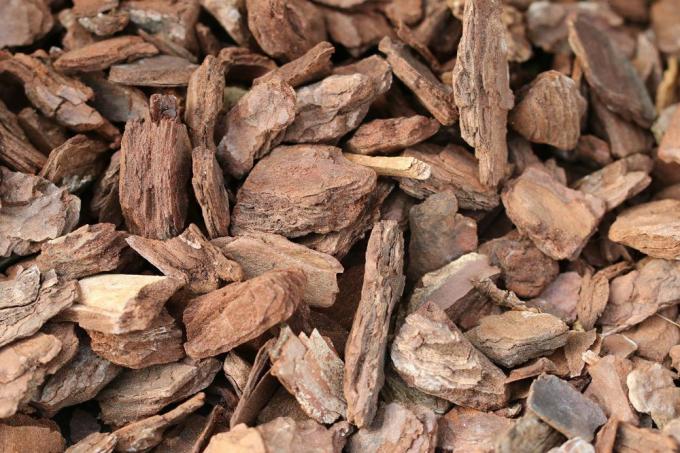
This means that air and water permeability are increasingly restricted. This means that less oxygen gets into the roots and thus into the interior of the plant and the leaves. Falling away is the result. You can recognize soil compaction by the fact that when the earth is lifted there are no air gaps and the soil is no longer loose, but is layered with solid soil particles.
Treatment:
Once a substrate has been compacted, hooking through or otherwise loosening up a potted plant like the Orchidaceae is of no use. The only way you can keep them from dying off is to repot them immediately in fresh substrate. This should absolutely be very permeable to water and have a particular looseness. Perlite proportions favor this.
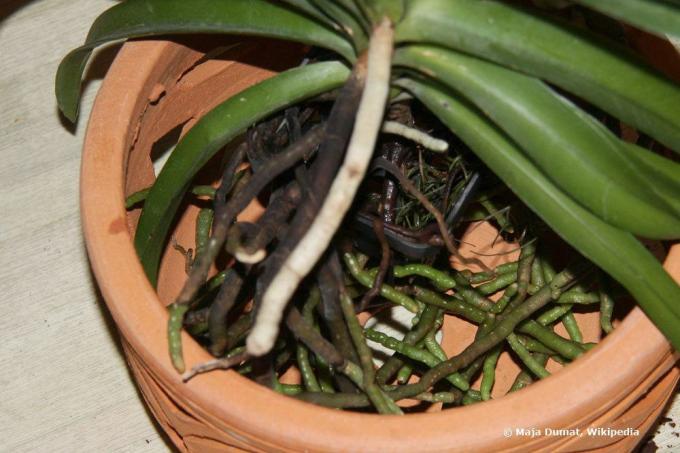
Flower spots
As a rule, the flower spots are brownish structures in various shapes and sizes. In the case of orchids, this usually indicates a fungal attack, whereby the so-called botrytis has usually settled on the plant. It belongs to the genus of the hose fungus and is usually not harmful to the orchid, as it is usually only active in the leaf area and causes purely visual damage.
Treatment:
As with all fungal infections, it is advisable to use a fungicide to combat flower spots caused by a fungal attack. When treating, keep in mind that orchids can develop resistance to fungicides over time. In this case, you should be careful with the fungus remedies and, ideally, only use them if the fungus should also spread beyond the leaves.

Flower waste
There can be several causes for premature dropping of flowers, but most of the time it is the result of an unfavorable location. The flowers usually fall before opening or shortly afterwards.

Temperature:
If a location that is too warm is chosen, the Orchidaceae often responds by shedding flowers. Especially during the winter, when she prefers it a little cooler, she becomes ill in most cases, especially when she is surrounded by warm, dry heating air. When all the flowers have fallen off, the leaves follow. Since they do not tolerate being moved well, a reduction in heat would be the better solution. Since this is usually not possible, especially in living spaces, a change of location is often unavoidable.
Tip: If you choose a cooler location in the first place, you will not only prevent the flowers from falling off, but you will also extend the flowering time.
Drafts:
The orchid prefers cool ambient temperatures, but cannot tolerate cold drafts. If the flowers fall off prematurely, this may be due to drafts, even if this is only generated by briefly opening the door. It is best to pay attention to this right from the start when choosing a location.
Light conditions:
If the Orchidaceae is too dark, it can with a leaf drop. but also react with the loss of the petals. That is why she is to put brighter immediately when recognizing the problem. However, direct sunlight should be avoided, whether in summer or winter.
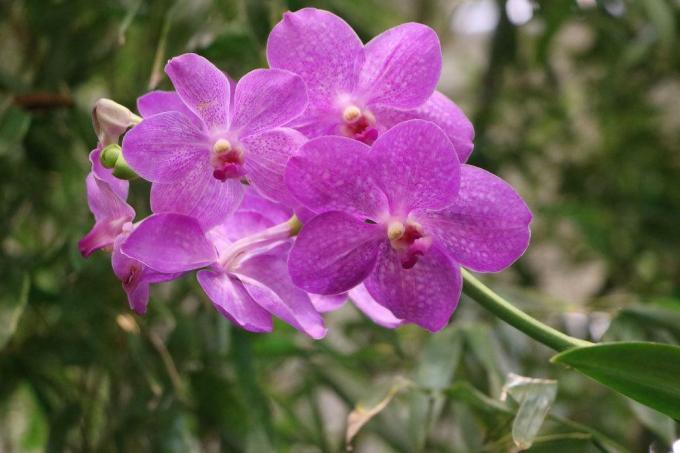
Change of place:
In many cases, flower drop is the result of a change of location. After buying it, it can bloom when it moves from the dealer's location to the window sill at home. As a rule, the orchid plant regenerates itself. But it can happen that the first flowering season ends with the loss of flowers due to a change of location and it only unfolds its full beauty in the following flowering period.
Leaf spots
If there are spots on the leaves, this may be due to a pest infestation, a fungal infection, virus infestation, invading bacteria or direct sunlight. The spots show up in brown or black. Usually the affected area is slightly sunken and feels dry. In the case of direct sunlight, it is a question of burns, while in the case of the other causes, death has occurred due to a lack of supply in the stained region.
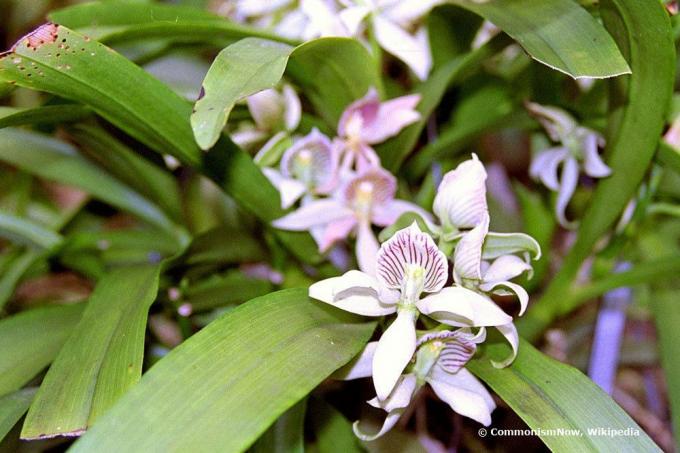
Fungal infection:
Too much moisture / humidity in combination with low air movements and poor lighting conditions often lead to a fungal infection. Treatment should be started quickly as the spots on the leaves widen / enlarge. To do this, proceed as follows.
- Cut off the affected leaves with a hygienically clean cutting tool
- Always dispose of cut leaves with household waste, never on the compost
- Lowering the humidity
- Ventilate more often for more air movement (avoid drafts)
- Apply broad spectrum fungicide
Burns:
It is imperative to avoid further direct sunlight so that a large-scale fire is prevented, which can cause immense damage to the plant. The already existing burned areas do not enlarge, but they also no longer recover and remain permanently.
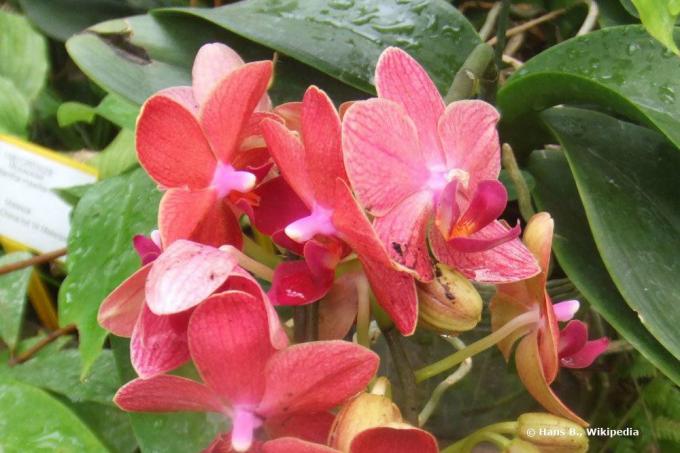
Bacterial attack:
If it is a bacterial disease, you can recognize it by sharply demarcated spots that are surrounded by moist, slimy tissue. They continuously increase in size, lead to a yellow leaf color and ultimately to leaf drop. Orchids are particularly susceptible to bacterial attack in winter. Act as shown below.
- immediately isolate the orchid to avoid infecting other plants
- Thoroughly disinfect the planter and culture pot
- Cut off diseased leaf areas generously
- Wait to see if the plant recovers
- If the leaf spots continue to spread, the only thing that helps is disposal
Viral infection:
A virus infection is clearly indicated by streak-shaped, arrow-shaped or ring-shaped leaf spots and only rarely occurs. A virus is usually transmitted by parasites or insects. So far, there is no promising treatment. All that remains is to dispose of the Orchidaceae in the household waste.
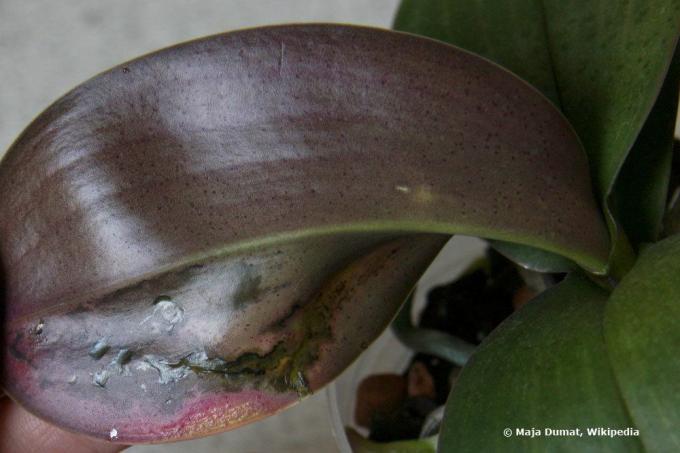
Putrefaction
If you mean too good about watering and moisture, leaf blotches from rot can show you this. Mold formation in the soil also indicates (beginning / existing) rot. Since this creates optimal conditions for bacterial infestation that can spread rapidly, it is necessary to react quickly.
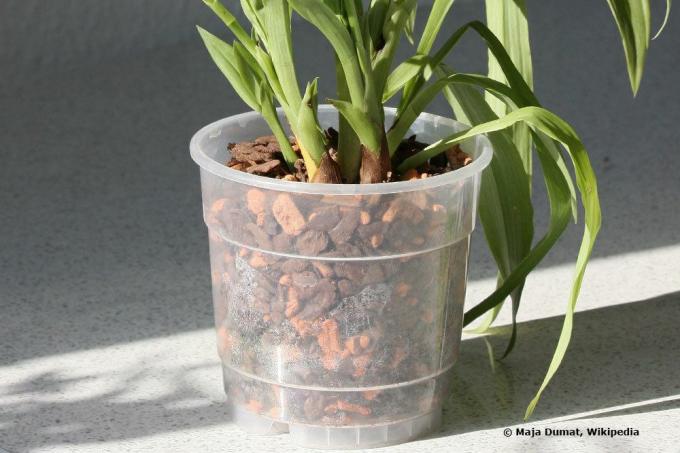
Treatment:
- Let standing water run off
- Place the flower warm at 21 to 23 degrees Celsius
- Cut off rotten, softened parts of the plant and sprinkle coal powder on the interfaces
- in case of severe rot, repot in fresh substrate
- Pay attention to plenty of light and fresh air, but little humidity
- Do not pour again until the substrate has dried
- water only in the morning so that evaporation occurs during the day
- if the onions or roots are badly rotten, orchids can no longer be saved
Accordion growth
You can clearly see an accordion or wrinkle growth. The leaves have creases that resemble an accordion. These usually arise when there is prolonged stoppages in growth due to irregular watering or when the ambient temperature is too cool / warm. In some cases, the wrinkles only appear as a blemish and do not constitute a disease. In any case, check your pouring behavior and ensure an optimal ambient temperature, which should be lower in winter.

Failure to bloom
If your Orchidaceae is doing well, but it's not blooming, there could be a variety of reasons. In many cases, the plant responds by failing to bloom if it has not been given a rest period in the winter months. Numerous types of orchid must have this, otherwise they will become ailing due to loss of strength and no buds will form or they will not develop further until they bloom.
TIP: If, for whatever reason, the orchid cannot be given hibernation in cool temperatures, this helps Administration of a plant disturbance agent specifically for this type of flower, such as the orchid elixir from Neudorff. It gives strength and promotes flower development.



